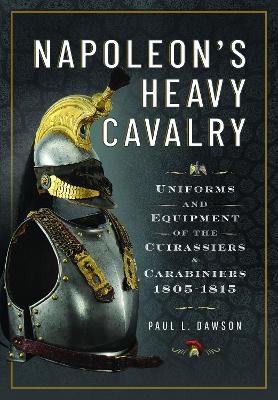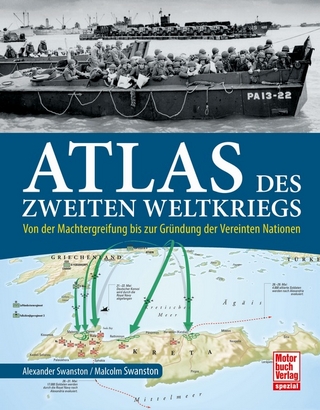
Napoleon’s heavy cavalry
uniforms and equipment of the Cuirassiers and Carabiniers, 1805-1815
Seiten
2024
|
1. Auflage
Frontline Books (Verlag)
978-1-5267-8419-3 (ISBN)
Frontline Books (Verlag)
978-1-5267-8419-3 (ISBN)
A definitive guide to the dress, weapons and accruements of the twenty-one regiments of cuirassiers and carabiniers that existed during the course of the 1e Empire were.
Created during the Peace of Amiens, the nineteen regiments of cuirassiers that existed during the course of the 1e Empire were, after the Imperial Guard, perhaps the most famous and recognisable soldiers of the epoch. This book explores the long gestation of clothing and equipping the cuirassiers, the development of the arm from twelve regiments to twenty-one – if we include the carabiniers from 1811 – and how their clothing evolved across the period. As well as assessing the curiassiers, the story of the evolution of the uniforms of the carabiniers is also told. Much ink has been spilt on the two regiments and their uniforms, yet, as with the cuirassiers, precious little archive research has been carried out.
This is one of a series of ground-breaking books which will be the defacto study of this perennially popular subject for historians, researchers, wargamers, re-enactors and artists. Using archive records to ‘set the record straight’, as well as contemporary illustrations and original items of uniforms, the author sets out to describe the uniform of every regiment of Napoleon’s army. Using archive sources found in the Archives Nationales and Service Historique du Armee de Terre in Paris, the author’s unrivalled research over a period of twenty years, will reveal exactly how, for the first time in over 200 years, Napoleon’s army was mounted, clothed and equipped.
Having been granted to access to over 1,000 archive boxes, the author assesses how the regulations were adopted in practice. This vast resource, as yet untapped by the majority of researchers and historians for understanding the Napoleonic era in general, include the many regimental archive boxes preserved in the French Army archives. These sources provide, potentially bias free empirical data from which we can reconstruct the life story of a regiment, its officers and above all its clothing. What did trumpeters wear? Did cavalry regiments really have sapeurs? We answer these questions and present the reality of how regiments were dressed derived from diaries, letters, inspection returns, regimental accounts and even cases of fraud.
For the first time, this unique series of books discusses the wide ranging 1806 uniform regulation and the more famous Bardin regulation which applied to all arms of the Army and explores the way in which regiments on campaign adopted and adapted their uniforms. For the first time since the days of Napoleon, we can say exactly what was worn by the French army.
Created during the Peace of Amiens, the nineteen regiments of cuirassiers that existed during the course of the 1e Empire were, after the Imperial Guard, perhaps the most famous and recognisable soldiers of the epoch. This book explores the long gestation of clothing and equipping the cuirassiers, the development of the arm from twelve regiments to twenty-one – if we include the carabiniers from 1811 – and how their clothing evolved across the period. As well as assessing the curiassiers, the story of the evolution of the uniforms of the carabiniers is also told. Much ink has been spilt on the two regiments and their uniforms, yet, as with the cuirassiers, precious little archive research has been carried out.
This is one of a series of ground-breaking books which will be the defacto study of this perennially popular subject for historians, researchers, wargamers, re-enactors and artists. Using archive records to ‘set the record straight’, as well as contemporary illustrations and original items of uniforms, the author sets out to describe the uniform of every regiment of Napoleon’s army. Using archive sources found in the Archives Nationales and Service Historique du Armee de Terre in Paris, the author’s unrivalled research over a period of twenty years, will reveal exactly how, for the first time in over 200 years, Napoleon’s army was mounted, clothed and equipped.
Having been granted to access to over 1,000 archive boxes, the author assesses how the regulations were adopted in practice. This vast resource, as yet untapped by the majority of researchers and historians for understanding the Napoleonic era in general, include the many regimental archive boxes preserved in the French Army archives. These sources provide, potentially bias free empirical data from which we can reconstruct the life story of a regiment, its officers and above all its clothing. What did trumpeters wear? Did cavalry regiments really have sapeurs? We answer these questions and present the reality of how regiments were dressed derived from diaries, letters, inspection returns, regimental accounts and even cases of fraud.
For the first time, this unique series of books discusses the wide ranging 1806 uniform regulation and the more famous Bardin regulation which applied to all arms of the Army and explores the way in which regiments on campaign adopted and adapted their uniforms. For the first time since the days of Napoleon, we can say exactly what was worn by the French army.
PAUL L. DAWSON BSc Hons, MRes, MIFA, FINS, is a professional historian, researcher and author who specialises in European history from 1780 to 1832. He has written over 40 books on a wide array of subjects, from equitation to theology, but is best known for his decades of research carried out at the French Army Archives in Paris, primarily about the Waterloo Campaign, as well as the uniforms and equipment of the French Army.
| Erscheinungsdatum | 01.02.2024 |
|---|---|
| Zusatzinfo | Illustrationen |
| Verlagsort | Barnsley |
| Sprache | englisch |
| Maße | 172 x 246 mm |
| Einbandart | gebunden |
| Themenwelt | Natur / Technik ► Fahrzeuge / Flugzeuge / Schiffe ► Militärfahrzeuge / -flugzeuge / -schiffe |
| Geschichte ► Allgemeine Geschichte ► Neuzeit (bis 1918) | |
| Geisteswissenschaften ► Geschichte ► Regional- / Ländergeschichte | |
| Geschichte ► Teilgebiete der Geschichte ► Militärgeschichte | |
| Sozialwissenschaften ► Politik / Verwaltung | |
| ISBN-10 | 1-5267-8419-X / 152678419X |
| ISBN-13 | 978-1-5267-8419-3 / 9781526784193 |
| Zustand | Neuware |
| Haben Sie eine Frage zum Produkt? |
Mehr entdecken
aus dem Bereich
aus dem Bereich
von der Machtergreifung bis zur Gründung der Vereinten Nationen
Buch | Softcover (2023)
Motorbuch Verlag
24,90 €


